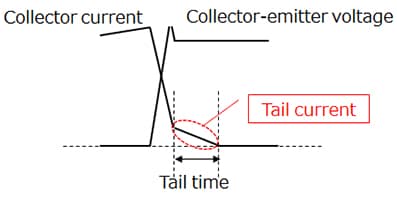-
My ToshibaSemicon
- 반도체 탑
-
애플리케이션Automotive
Body Electronics
xEV
In-Vehicle Infotainment
Advanced Driver-Assistance Systems (ADAS)
Chassis
IndustrialInfrastructure
BEMS/HEMS
Factory Automation
Commercial Equipment
Consumer/PersonalIoT Equipment
Healthcare
Wearable Device
Mobile
Computer Peripherals
-
제품자동차 디바이스
Discrete Semiconductor
다이오드
트랜지스터
로직 IC
Analog Devices
Digital Devices
Wireless Devices
※
: Products list (parametric search)
파워반도체※
: Products list (parametric search)
Isolators/Solid State RelaysPhotocouplers
Digital Isolators
Solid State Relays
Fiber Optic Transmitting Modules
※
: Products list (parametric search)
MOSFETsIGBTs/IEGTs바이폴라 트랜지스터※
: Products list (parametric search)
다이오드※
: Products list (parametric search)
마이크로컨트롤러모터 드라이버 ICIntelligent Power ICs※
: Products list (parametric search)
전원관리IC리니어 IC※
: Products list (parametric search)
범용로직IC리니어 이미지 센서기타 제품용 IC기타 제품용 IC
※
: Products list (parametric search)
-
개발/설계 지원
-
기술 자료
- 구매처
- 부품 번호 & 키워드 검색
- 상호 참조 검색
- 파라미터 검색
- 재고 확인 및 구매
This webpage doesn't work with Internet Explorer. Please use the latest version of Google Chrome, Microsoft Edge, Mozilla Firefox or Safari.
3글자 이상 입력하세요. Search for multiple part numbers fromhere.
The information presented in this cross reference is based on TOSHIBA's selection criteria and should be treated as a suggestion only. Please carefully review the latest versions of all relevant information on the TOSHIBA products, including without limitation data sheets and validate all operating parameters of the TOSHIBA products to ensure that the suggested TOSHIBA products are truly compatible with your design and application.Please note that this cross reference is based on TOSHIBA's estimate of compatibility with other manufacturers' products, based on other manufacturers' published data, at the time the data was collected.TOSHIBA is not responsible for any incorrect or incomplete information. Information is subject to change at any time without notice.
3글자 이상 입력하세요.
What is the tail current of an IGBT?

The IGBT is a type of power transistor that operates in bipolar mode because of the P layer formed on the drain side of a MOSFET. The IGBT uses a phenomenon called conductivity modulation that exhibits a reduction in the resistivity of the high-resistance N- drift region at turn-on when holes are injected from this P region.
On-state voltage can be reduced because of conductivity modulation, but the IGBT needs to remove minority carriers from the N- drift region when it turns off.
When the IGBT begins to turn off, minority carriers are swept out to external circuitry. When the collector-emitter voltage (VCE) of the IGBT has risen to a certain level (i.e., after the depletion region has expanded), minority carriers contribute to internal recombination current. This current is called tail current. Because tail current is the collector current with a high VCE voltage being applied, it is one of the significant contributors to switching loss.
To reduce tail current and thereby switching loss, IGBTs are principally designed so as to reduce 1) the lifetime of minority carriers and 2) the amount of holes injected from the collector. However, both these techniques cause a rise in on-state voltage. Therefore, IGBTs are designed with optimum trade-offs among these characteristics according to their intended applications.

